There was so much joy at The Open… from the remarkable beauty of Royal Portrush twisting through and over the dunes, to the fantastic and welcoming residents of the Irish island, to the sights and sounds of fans across the links as they helped lift Shane Lowry into history as Champion Golfer of the Year.
There were so many moments of joy tumbling through the week. There was a magical Irish pub that became a home away from home, a unique group of guys who love the game of golf sharing breakfast each morning and drinks at night, every hue of green from coast to mountain and back again, the company of remarkable strangers from across the globe, along with golf to score, watch and play. But through a week of immense joy, a handful of moments radiate across time and oceans as memories that will last forever.
Barreling along the Coastal Causeway, in a well-worn Peugeot driven by a curious Irish lad as we sang County Crows at the top of our lungs with the wind carrying our voices off across the emerald landscape, lingers as a moment of great joy.
“Believe in me
Help me believe in anything
‘Cause I want to be someone who believes…”
But even that was far from the only singing that danced through the entire week as live music at local pubs created a soundtrack to our drinking, our eating and our time abroad.
Without doubt however, the most powerful singing was belted out by thousands of serenading Irish fans Saturday as they gathered behind the 18th green while Lowry signed for a bogey-free score of 63. Their songs carried forth across his windy, rain soaked Sunday round of 72 as well – accepted by most of us as rivaling the 8-under score he posted in the lovely Saturday sun – growing to an endless roar of cheers as he played through the final holes and owned The Open with a six-stroke lead.
These happy, singing, joyous fans wanted something to believe in after waiting 68 years for The Open to return to their island. And as the drama unfolded, they had more than something to believe in, they had someone to believe in. While Northern Ireland’s own faltered – lingering well behind the leaders or failing to make the cut altogether – Lowry carried the torch for the entire island.
Yet the joy was hardly contained to the players – and not even just to those who live on the great, green island… the joy was felt by anyone with a pulse, by anyone who was trying to feel anything at all.
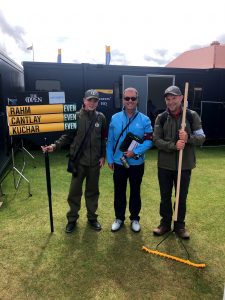 One who seemed to tap into that joy as much or more than any of us was my Thursday carry-board carrier Louie, a 16-year-old from England who plays off a 6 handicap. Louie had flown over with a buddy early, in time to spectate the Sunday practice round – and he wasn’t leaving until after the final putts fell the next Sunday.
One who seemed to tap into that joy as much or more than any of us was my Thursday carry-board carrier Louie, a 16-year-old from England who plays off a 6 handicap. Louie had flown over with a buddy early, in time to spectate the Sunday practice round – and he wasn’t leaving until after the final putts fell the next Sunday.
While his dad was coming for the weekend, for less than $190 Louie secured himself a tent in the campground just a few minutes from the course that included a junior ticket to watch all the golf he could during the week. He and his buddy were in golf spectating heaven – and both were volunteering inside the ropes as well. And while I couldn’t quite get my head around camping at The Open, his excitement was a joy to behold.
Our Thursday game also didn’t disappoint – we’d be walking with Jon Rahm, Matt Kuchar and Patrick Cantlay. Rahm – a two-time winner of the Irish Open, including just down the road at Portstewart – rocketed up the leaderboard with a front nine 31, holding a share of the lead for most of the round we walked with him.
Thanks to Rahm’s start – and the challenge of the course itself – Louie was busy, changing scores on the board 23 times. He only had five change-less holes and got to swap out all three scores on both the second and seventh holes. Besides his absolute joy at being inside the ropes bearing witness to the oldest major in the game, he was a first rate board carrier – with numbers changing almost as fast as the putts were falling.
As life would have it, I ran into him minutes after Lowry’s final putt Sunday while taking in the big yellow scoreboard in a hazy rain. The next day I even met his dad at the airport on our flight out of Belfast. Louie didn’t really need the R&A’s encouragement to love the game, but the one-price ticket / camping option for juniors no doubt helped spread the joy of the week to the next generation and felt like a great “grow the game” initiative despite the rain and wind.
Of course Louie was far from the only joy I encountered inside the ropes.
My American friend Dave Belding was scoring his third major of the year – including the final round with U.S. Open champion Gary Woodland on Father’s Day in June – and volunteering at his fourth. We’d been referring to it as his Volunteer Slam for well over a year – something I’m unaware of anyone else doing as a volunteer in the same calendar year, though perhaps others have as well. During the week at Portrush we’d walk a few holes inside the ropes together training local scorers in the pouring rain who’d never scored a major before.
Dave scores more tournaments in one year than most people do in five and no one tells better golf tales over a bottle of wine than the attorney from South Carolina. He was kind enough to travel to New Jersey a few years ago to score when I was doing the scheduling for the Women’s U.S. Open and notably spent an entire evening entertaining my dad while doing laundry in our hotel while I was tied up on the course.
Between visiting the tailor to get our volunteer uniforms fitted and taking our first look at Royal Portrush, Dave gathered a group of American volunteers together – a couple from California, another from Illinois, and a mutual friend from Atlanta. We had our customary fish and chips together on a sunny Sunday afternoon outside on the course… and most of us later met up again for drinks and dinner in the town of Bushmill over fresh fish, good wine and Irish coffees.
We each told a decent golf story or two during dinner before Dave took control, sharing a series of hilarious anecdotes that left us laughing and excited for the week ahead. The joy that night was fueled by the stories, the shared experiences, the people who were suddenly friends, the week of golf ahead… and naturally the Bushmills whiskey made just up the winding main street of the town.
Of course there was outstanding joy from those who would never get the opportunity to duck under the ropes and experience The Open as we were so fortunate to do.
Early in the week, on a perfect day where the temperature hit 75 degrees and the clouds were wispy and sparse, I broke out my own sticks and wandered among the dunes of Portstewart’s Strand golf course – home to the 2017 Irish Open won by Jon Rahm.

I made the customary jokes to an Englishman my age and his dad – as well as a nice guy from Boston who rounded out our foursome – about how sorry I was they were forced to enjoy this beautiful day with my golf swing… before playing probably the worst five holes of my life. Mind you, these were some of the most remarkable holes I’ve ever walked, truly unique and memorable among majestically high dunes – but my swing had totally abandoned me. To make matters worse, my kind and lovely caddie was a member of Portstewart, had looped that morning for a guy who shot even par, and carried a +2 handicap of his own.
But even then, there was joy around the bend.
Thankfully, before the first nine were through I’d scraped together a couple pars. I made a further attempt to pull myself together at the halfway hut with a gin and tonic. With no ice and no limes (or any citrus) to speak of, I ended up slowly sipping a cup of warm gin mixed with equally warm tonic for the duration of the tenth hole.
It remains unclear if it was that odd and not very satisfying elixir that did the trick or my caddies’ suggestion that I make a fuller shoulder turn, but I managed to find my driver once again and parred five of the final nine holes to marginally feel like a golfer limping up the 18th. I think it was a concerted effort to keep my head down while chipping and a much improved – and fuller – shoulder turn with the driver, but there’s a certain joy to thinking the warm gin took some strokes off my back nine score that day!
While the course itself was a joy to walk – the front nine was a marvel carved among dunes where no golf course should have been, yet remarkably was – the clubhouse bar is truly where I shine. So it was that the Englishman and his dad and I ended up telling stories and drinking a wee bit more gin after the round – with ice and orange slices this time.
Like most of the trip – which was full of the most amazing strangers insisting on making the trip the best it could be – my caddie and his wife swung by our table to tell me he’d arranged for a buddy of his to drive me back to where I was sleeping.
The ride was a joy unto itself… for a bit of gin was in my veins, the northern Irish skies were crystal clear, and the drive meandered along the old coastal route hugging the Atlantic Ocean. The driver insisted on stopping a few times because the setting sun and the views were too remarkable not to pause and soak in – in fact, he kept apologizing for wasting my time; I kept stressing time spent like this was never wasted.
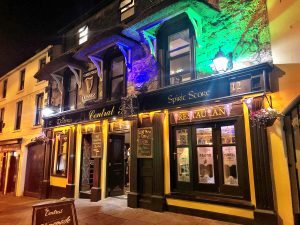 He was nice enough to drop my clubs at our place and deposit me at the Central Wine Bar in the heart of Ballycastle – as much a home for the week as the spacious room in the B&B itself – where I was reunited with my Australian golf scoring volunteer and friend Dave Wintrip of Dubai, Shinnecock, Carnoustie, Pebble Beach and more.
He was nice enough to drop my clubs at our place and deposit me at the Central Wine Bar in the heart of Ballycastle – as much a home for the week as the spacious room in the B&B itself – where I was reunited with my Australian golf scoring volunteer and friend Dave Wintrip of Dubai, Shinnecock, Carnoustie, Pebble Beach and more.
In a four-level Irish pub founded by their parents a mere five minute walk up the hill from where we slept, Aaron McHenry and his sister Cara, created for us a perfect living room filled with UK Navy veterans, hurling and rugby fans, local curmudgeons, live music, and golf on the televisions. From local sea trout, salmon, shrimp and scallops to great risottos and duck pancakes, the food out of the kitchen was always outstanding. And Aaron’s knowledge of Irish whiskey – both north and south, from Jameson to Redbreast 12 to Bushmills of all ages, including the smooth 21-year-old – and stints bartending in Tuscaloosa (of all places) ensured I was drinking outstanding cocktails every evening.
In all honesty, among the remarkable joys of the week, this pub was a unique and distinct pleasure just as great as Royal Portrush’s Dunlace Links, or Dustin Johnson’s swing I scored through 18 holes Sunday, or the lush green fields and magnificent ocean vistas that enthralled us all week. After all, I’ve been a regular at more than a few restaurants and bars in my life, but never so quickly, never more heartfelt, almost never feeling more welcome anywhere than I did in the front bar of this Irish pub.
For we were all tourists in Northern Ireland that week, gathering like golf fans do for every great championship looking for something to believe in, some experience that will be indelibly imprinted on our life’s journey. Everywhere we went we felt the great joy of those who lived there – and their need to share that joy to enhance our time spent among them. No one captured that feeling more day in and day out for me than our man Aaron in his family’s pub.
Aaron brought Louie’s excitement and passion, all Dave Belding’s experience and dedication and combined it with the joy and hospitality of those we met from Portstewart to Portrush to Ballycastle and the little towns and villages in between.
It was a week of pure joy.
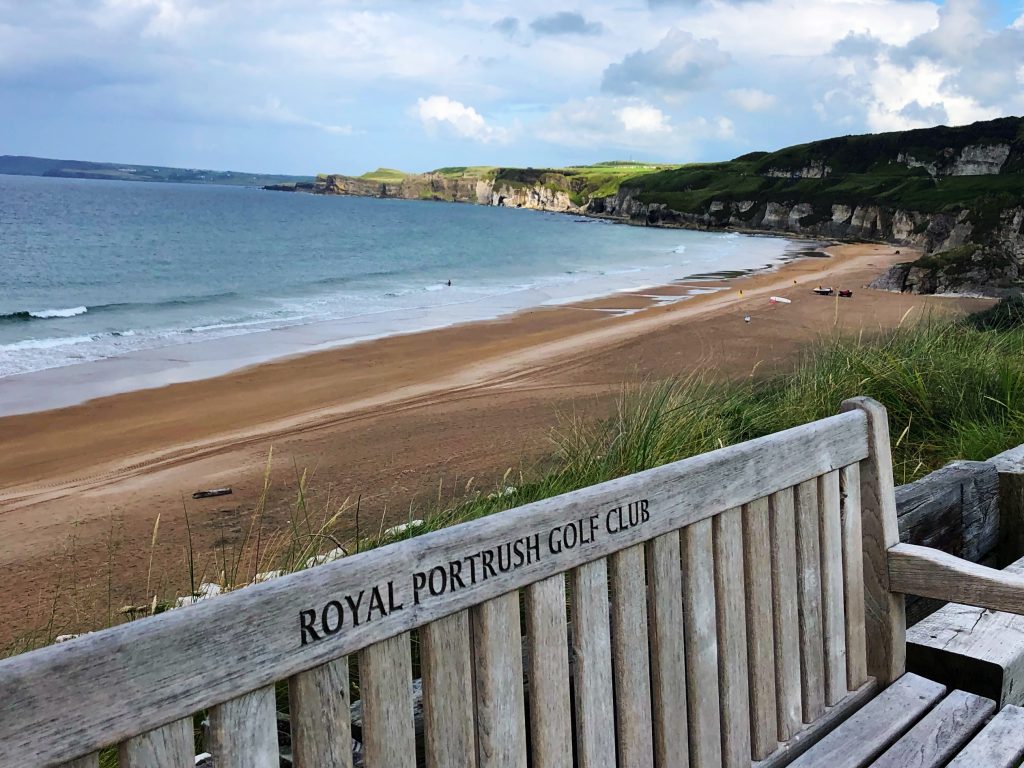
Such that on the way out of town, the same curious Irish lad and I blasted Mr. Jones one more time, singing near the top of our lungs across the back roads and down the motorways toward Belfast…
“Believe in me
Help me believe in anything
‘Cause I want to be someone who believes…”
Maybe none of us came to The Open at Royal Portrush rooting for Shane Lowry, but I left full of joy that he’d lifted the Claret Jug and won this championship for the people of this island.
And full of hope the R&A would invite us all back to this wonderful place very soon.
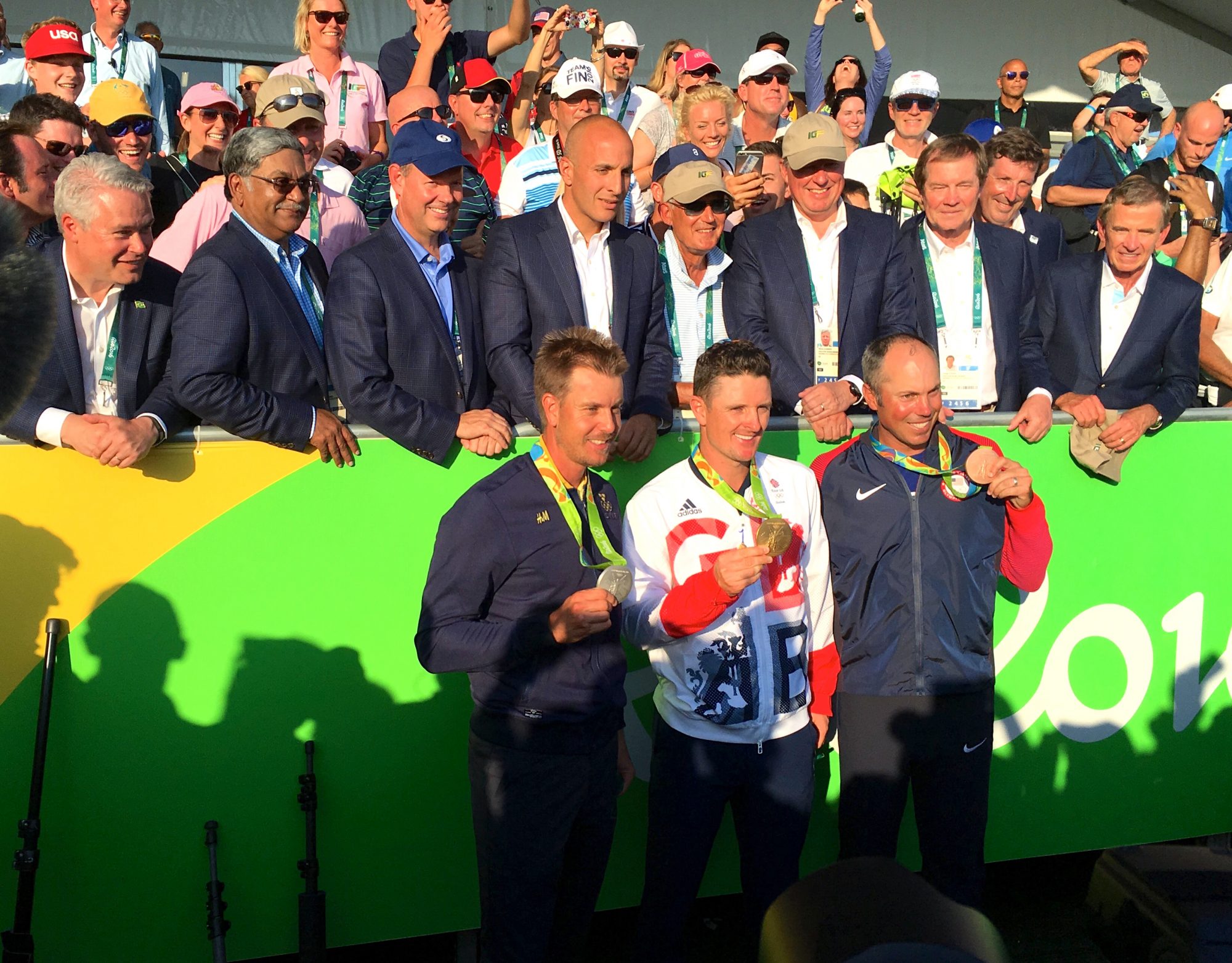
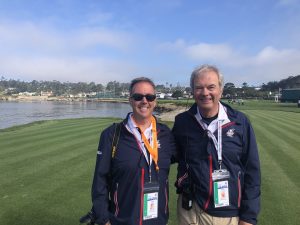
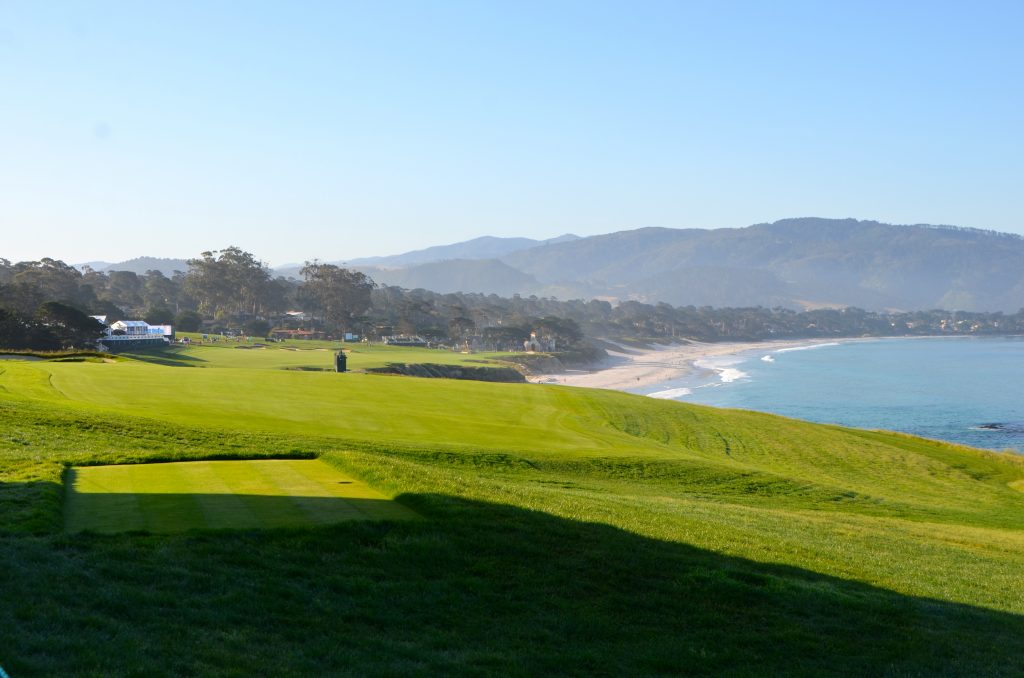
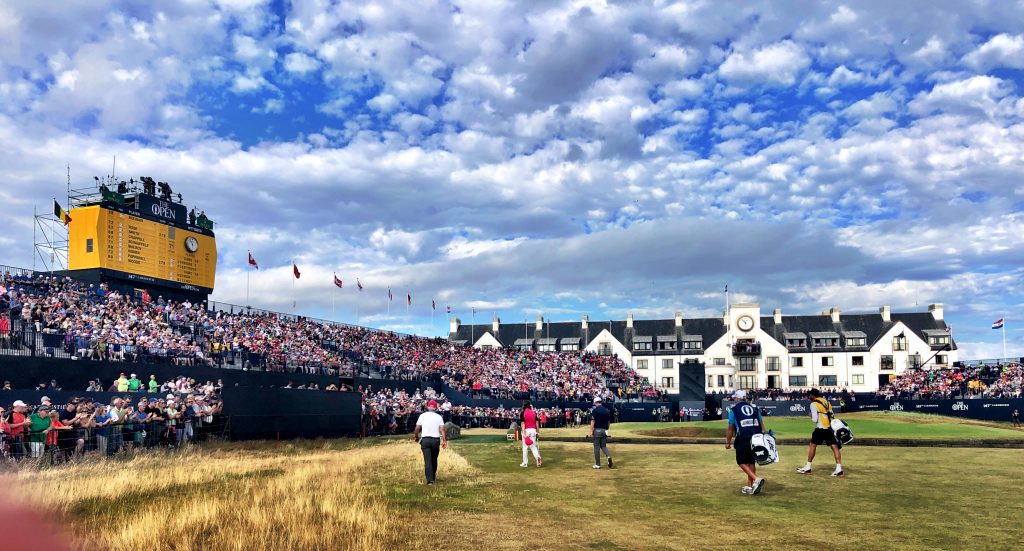
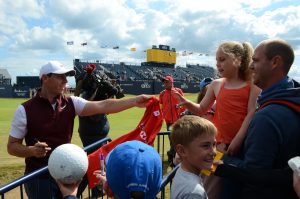 Maybe it was the unique and iconic yellow scoreboards, the feel and look of the course itself so far removed from the over-manicured, the rough beauty of the landscape and the salt air, and of course the fourth fellow walking along with our normal trio to rake the bunkers as we make our way from the first tee to the eighteenth green.
Maybe it was the unique and iconic yellow scoreboards, the feel and look of the course itself so far removed from the over-manicured, the rough beauty of the landscape and the salt air, and of course the fourth fellow walking along with our normal trio to rake the bunkers as we make our way from the first tee to the eighteenth green.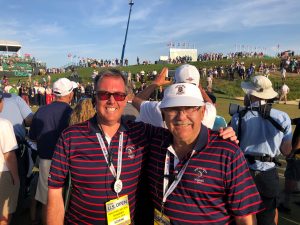
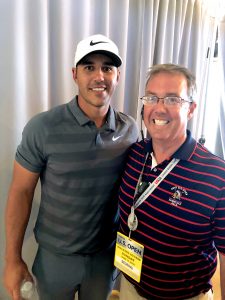 In that moment, right there left of the 11th green, I felt as if Brooks touched the trophy for the first time that day. If it wasn’t yet within his grasp, it was again within his reach. I remember commenting to a USGA guy standing to my left that we may well have just witnessed the bogey that won the U.S. Open.
In that moment, right there left of the 11th green, I felt as if Brooks touched the trophy for the first time that day. If it wasn’t yet within his grasp, it was again within his reach. I remember commenting to a USGA guy standing to my left that we may well have just witnessed the bogey that won the U.S. Open.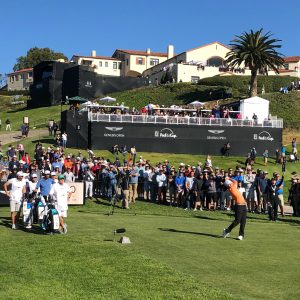
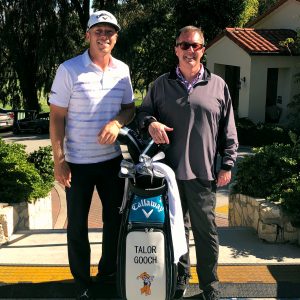
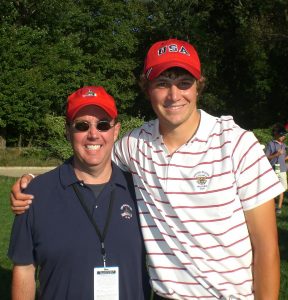 He was nervous and confident in about equal measure, wore his heart on his sleeve, joked and chatted without reservation, and hit some of the greatest pressure golf shots I’ve ever seen – more than eight years later I still remember a dazzling one-iron from 285 yards uphill on the 2nd, a shocking chip-in on 16 after missing the green across the quarry (and the ensuing low five he loudly administered to my left hand) and the emotion of a magical putt on the 17th to secure an American victory.
He was nervous and confident in about equal measure, wore his heart on his sleeve, joked and chatted without reservation, and hit some of the greatest pressure golf shots I’ve ever seen – more than eight years later I still remember a dazzling one-iron from 285 yards uphill on the 2nd, a shocking chip-in on 16 after missing the green across the quarry (and the ensuing low five he loudly administered to my left hand) and the emotion of a magical putt on the 17th to secure an American victory.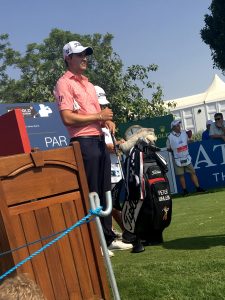 Anyone with internet access can go back and look at exactly how Pete played those three rounds in Dubai – and could probably piece together the state of his health after a WD the week before while tied 10th after the first round in South Africa. Suffice to say despite battling his stomach, his golf in Dubai was strong, his iron play was often masterful, and his swing looked as good as I’d ever seen it – more simple, compact and repeatable – but the joy was simply being there inside the ropes, hearing the laughter, listening to the chatter, seeing the smile, and witnessing the kindness in how he treated competitors, volunteers, family and fans.
Anyone with internet access can go back and look at exactly how Pete played those three rounds in Dubai – and could probably piece together the state of his health after a WD the week before while tied 10th after the first round in South Africa. Suffice to say despite battling his stomach, his golf in Dubai was strong, his iron play was often masterful, and his swing looked as good as I’d ever seen it – more simple, compact and repeatable – but the joy was simply being there inside the ropes, hearing the laughter, listening to the chatter, seeing the smile, and witnessing the kindness in how he treated competitors, volunteers, family and fans.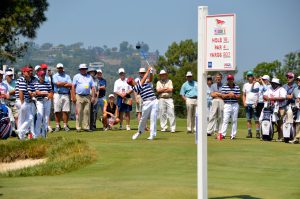 In the two-plus hours it takes to travel from Lionel Ritchie’s old house to the Playboy Mansion, you can learn a lot about a place. And you can learn a lot about a group of people. After that walk at the 2017 Walker Cup on Los Angeles County Club’s North course the biggest thing I learned is how open and excited the membership is to be having us (and some extraordinarily elite golfers) all over for the weekend at one of America’s best and most exclusive tracts.
In the two-plus hours it takes to travel from Lionel Ritchie’s old house to the Playboy Mansion, you can learn a lot about a place. And you can learn a lot about a group of people. After that walk at the 2017 Walker Cup on Los Angeles County Club’s North course the biggest thing I learned is how open and excited the membership is to be having us (and some extraordinarily elite golfers) all over for the weekend at one of America’s best and most exclusive tracts.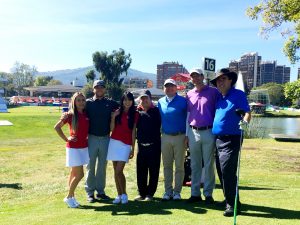 Three holes in, Christian of the public relations world, pulled me aside with a statement that was partly a question: “You are NOT a caddie, Mike.”
Three holes in, Christian of the public relations world, pulled me aside with a statement that was partly a question: “You are NOT a caddie, Mike.”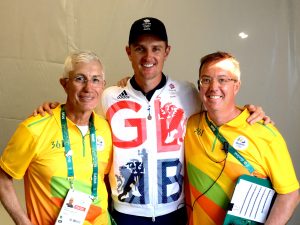 While it may not exactly be my story to share, I’m not sure anything better sums up my experience at Olympic golf than Justin Rose’s Facetime call to his kids right after he signed his scorecard.
While it may not exactly be my story to share, I’m not sure anything better sums up my experience at Olympic golf than Justin Rose’s Facetime call to his kids right after he signed his scorecard.